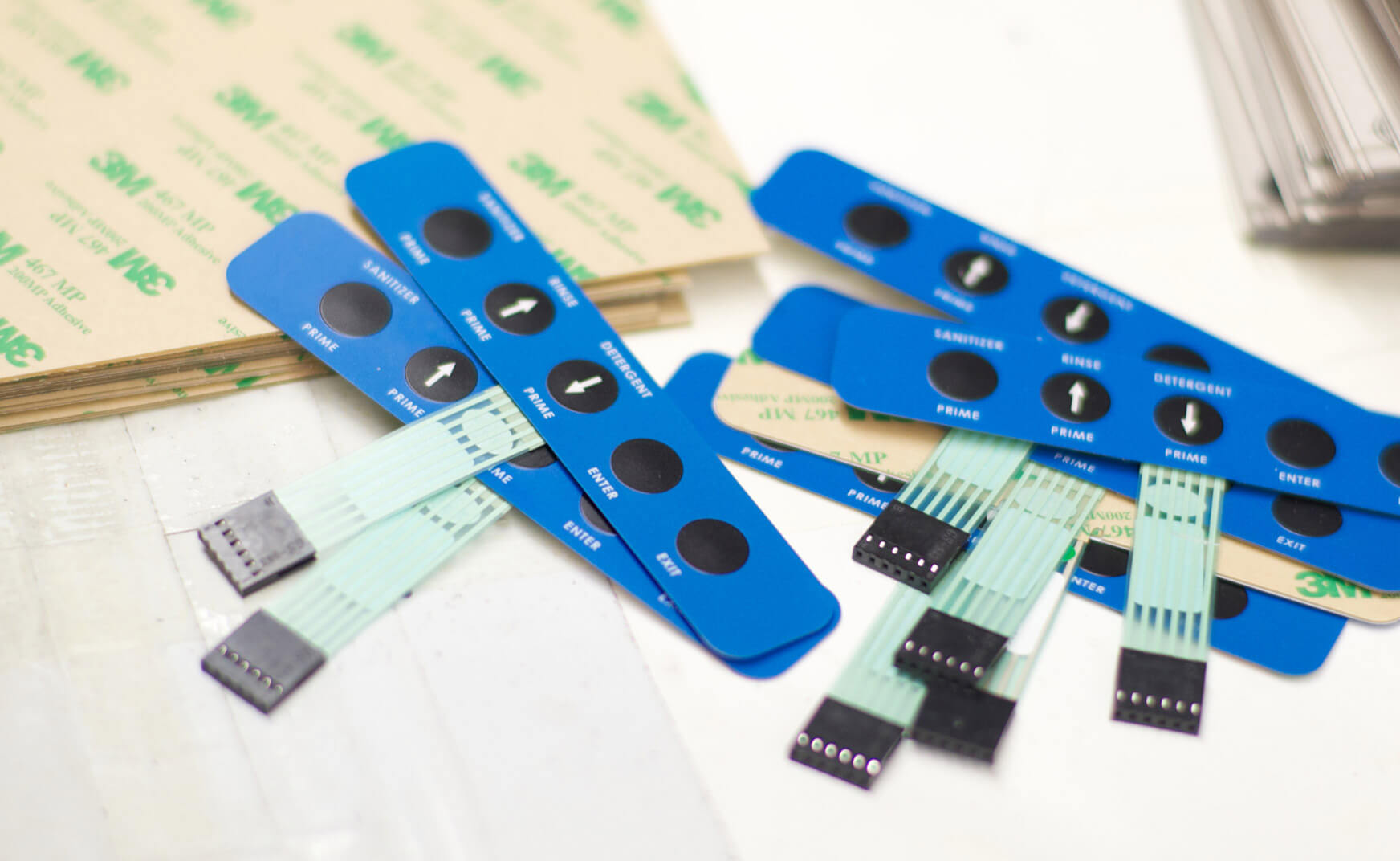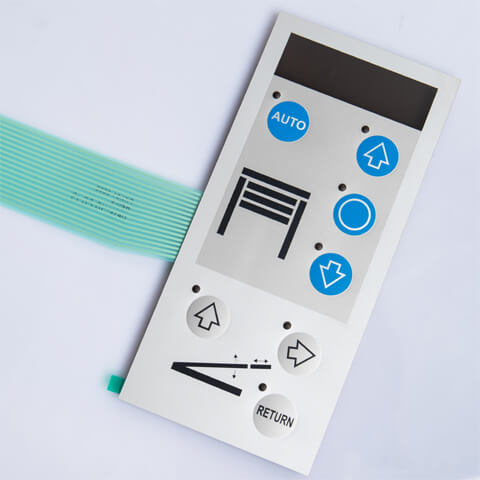How a Membrane Switch Enhances Customer Experience and Device Effectiveness
How a Membrane Switch Enhances Customer Experience and Device Effectiveness
Blog Article
The Role of Membrane Layer Changes in Enhancing Gadget Use and Looks
Membrane changes represent a substantial advancement in interface modern technology, seamlessly incorporating usability with aesthetic allure. Their design is not just useful, supplying responsive controls in a compact type, yet also customizable, enabling one-of-a-kind branding and aesthetic involvement. As industries increasingly prioritize customer experience, the implications of these functions prolong past simple ease, affecting item layout and consumer fulfillment. What continues to be to be discovered is just how these components will certainly advance in feedback to arising patterns and technical advancements, shaping the future of human-device interaction.
Recognizing Membrane Layer Switch Technology

The visuals overlay offers as the noticeable surface, typically printed with icons and labels that direct customer communication. Underneath this layer, the spacer works as a separator, making certain that the conductive layer only makes call when a button is pushed. The conductive layer, usually constructed from a conductive ink or material, completes the circuit and sends signals to the gadget's electronic devices.
Toughness is a significant benefit of membrane layer buttons, as they are resistant to wetness, dust, and contaminants, making them ideal for numerous environments. In addition, membrane layer switches can be personalized in regards to form, dimension, and layout, allowing makers to customize interfaces to details gadget needs. This adaptability adds to their prevalent use throughout sectors, from consumer electronics to clinical tools.
Use Advantages of Membrane Buttons
The usability benefits of membrane switches appear in their instinctive layout and user-friendly functions. These buttons help with simple interaction by integrating responsive comments and well-known symbols, which enhance the user experience through clear communication of feature (Membrane Switch). The level account of membrane layer changes allows for simple combination into various tools, minimizing the learning curve for users not familiar with intricate controls
Additionally, membrane layer buttons are frequently developed with level of sensitivity in mind, allowing individuals to engage with controls effortlessly. This particular is especially helpful in atmospheres where quick responses are critical, such as medical tools and commercial equipment. Their resistance to wetness and impurities additionally makes certain reliable operation, promoting user confidence in varied settings.
Moreover, membrane layer switches can be customized to match details applications, fitting distinct customer demands and choices. This adaptability fosters a sense of possession amongst individuals, as they can connect with controls that feel customized to their demands.
Visual Enhancements Via Layout
Aesthetic enhancements play a significant duty in the general appeal and capability of gadgets geared up with membrane buttons. These switches use versatile design opportunities that can be tailored to fulfill brand identification and customer choices. The ability see this page to include dynamic shades, personalized graphics, and varied structures enables manufacturers to create aesthetically striking user interfaces that reverberate with individuals on a psychological level.
The adaptability of membrane button style also assists in the assimilation of distinct forms and layouts, contributing to a structured appearance that enhances the user experience. This not just makes gadgets more eye-catching but also aids in user-friendly navigating, as customers can easily identify practical locations and controls. Additionally, advanced printing innovations make it possible for the reproduction of detailed designs and high-resolution images, even more raising the visual top quality.
Moreover, using backlighting in membrane buttons can significantly enhance visibility and allure, particularly in low-light atmospheres. This mix of appearances and performance cultivates an engaging individual experience, making tools not just extra enjoyable to utilize yet additionally extra aligned with contemporary style patterns. Eventually, aesthetic enhancements with cautious membrane switch layout can change normal gadgets right into engaging, straightforward items.
Applications in Numerous Industries
In countless sectors, membrane layer switches have actually come to be important components that enhance capability and usability across a variety of devices. These cutting-edge switches find applications in markets such as healthcare, consumer electronic devices, auto, and commercial equipment.
In the medical care sector, membrane buttons are generally made use of in medical devices, such as diagnostic equipment and client surveillance systems, where they supply instinctive user interfaces that boost user interaction while preserving hygiene. In consumer electronics, membrane layer switches facilitate user-friendly controls in devices, remote controls, and video gaming devices, offering smooth useful site procedure and aesthetic charm.

Future Fads in Membrane Layer Buttons
Emerging trends in membrane buttons are established to change user interfaces throughout various applications, driven by developments in technology and boosting customer demands for functionality and style. One notable pattern is the consolidation of capacitive touch innovation, which uses a much more responsive and contemporary user experience compared to conventional mechanical buttons (Membrane Switch). This shift not just improves functionality yet likewise permits sleeker gadget aesthetics
In addition, the combination of customizable graphics and backlighting is becoming increasingly popular. Manufacturers are leveraging innovative printing techniques and LED technology to develop visually interesting interfaces that provide to details user needs while improving device presence in numerous lights problems. This personalization cultivates a stronger psychological link in between customers and their tools.

Conclusion
Finally, membrane layer changes substantially enhance both usability and aesthetic appeals in modern-day devices. Their intuitive style, responsive controls, and customizable graphics promote user communication, particularly in vibrant environments. The consolidation of vivid shades and backlighting not just boosts aesthetic allure yet additionally enhances functionality, allowing for efficient navigation in different lighting problems. As sectors proceed to develop, the versatility and cutting-edge capacity of membrane layer switches will likely play a significantly important duty in device layout and user experience.
Report this page